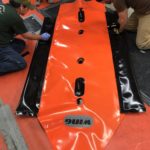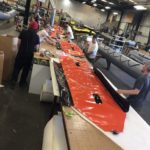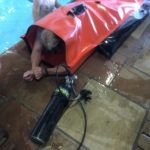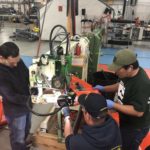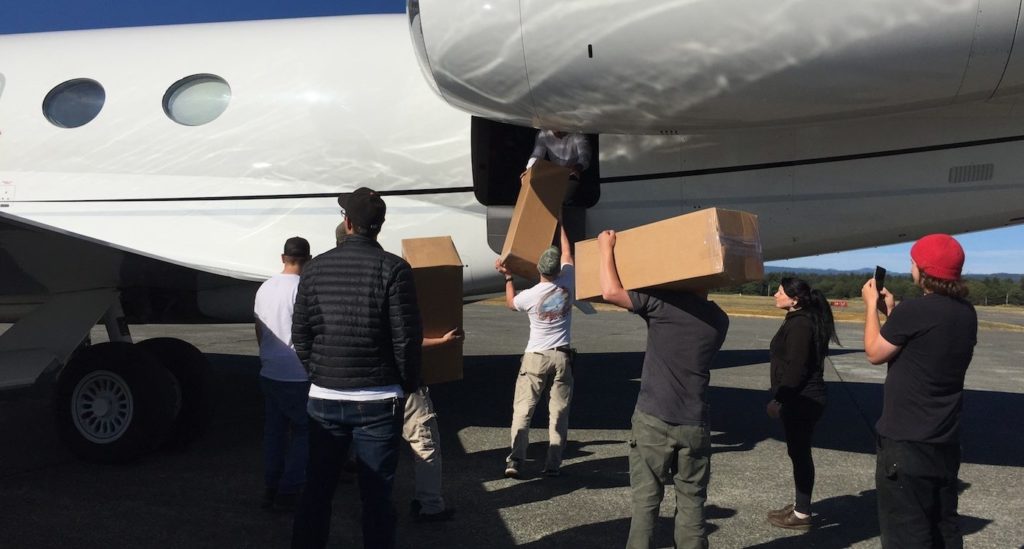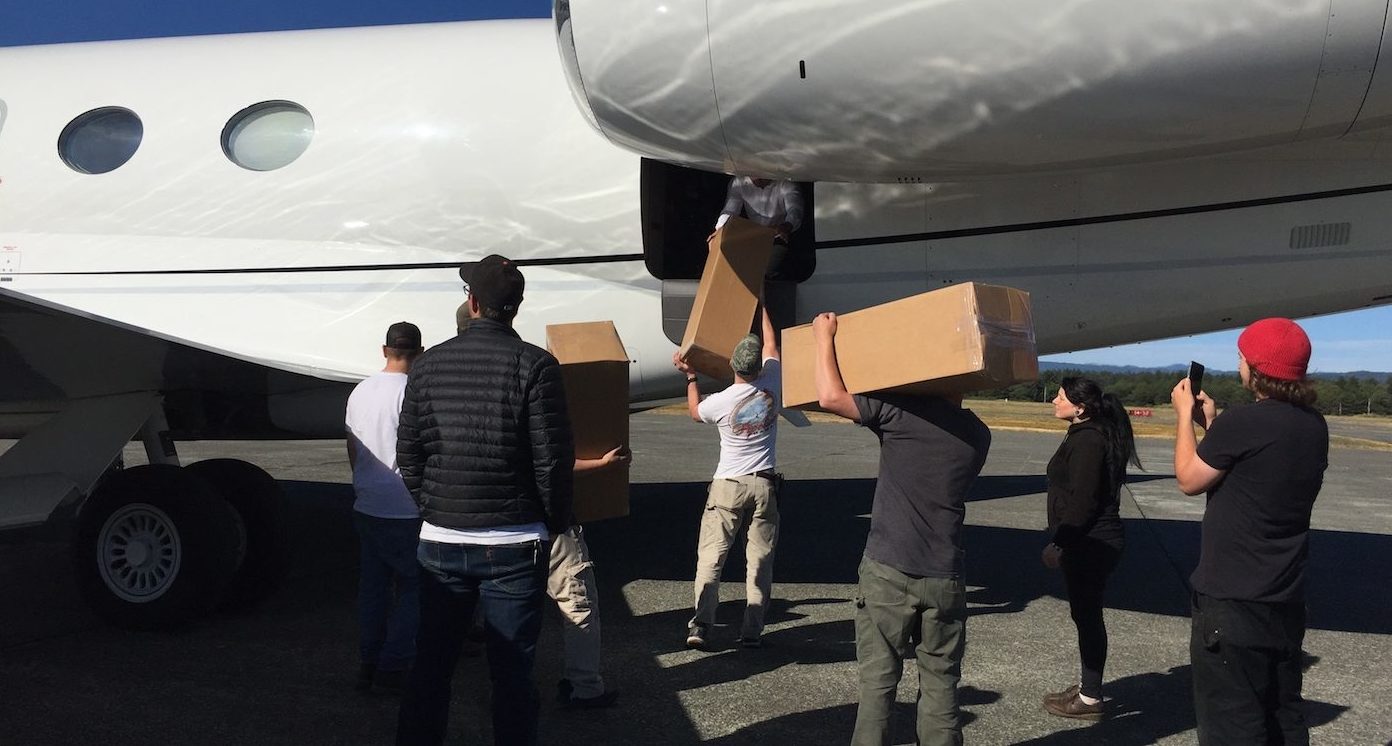

News
Answering Elon Musk’s call for help to build Thailand’s cave rescue pod in 24 hours
On the morning of Friday, July 6, Andrew Branagh received a call that would put his company’s 30-year experience in the field to the test. Branagh, who serves as the CEO of Arcata-based Wing Inflatables, had been asked by Elon Musk’s engineering team from SpaceX to construct an inflatable escape pod for the 12 children and their coach who are currently stranded in an air pocket inside the sprawling Tham Luang Nang Non cave complex in Thailand. Knowing that time is of the essence, Branagh and his team got to work.
The stranded members of the Wild Boar Soccer Team have been stranded in the caves since June 23, after a casual excursion into the underground caverns turned into a pitch-black ordeal due to flash floods. The group of 13, comprised of boys aged 11-16 and their 25-year-old coach, were missing until this past Monday, when they were located by two UK divers. The children and their coach have been given food and survival supplies, and on Tuesday, a doctor and a nurse spent the night with them. While the group is safe for now, however, retrieving them is not easy, considering that they are located 2.5 miles away from the entrance to the caves. Parts of the cave systems are also underwater, which would force the children to dive into murky waters during their retrieval.
- Wing Inflatables’ rescue pods under construction. [Credit: Giovanna Castro Salas/Wing Inflatables via Mad River Union]
- Wing Inflatables’ rescue pods under construction. [Credit: Giovanna Castro Salas/Wing Inflatables via Mad River Union]
- Wing Inflatables’ rescue pods under construction. [Credit: Giovanna Castro Salas/Wing Inflatables via Mad River Union]
- Wing Inflatables’ rescue pods under construction. [Credit: Giovanna Castro Salas/Wing Inflatables via Mad River Union]
- Wing Inflatables’ rescue pods under construction. [Credit: Giovanna Castro Salas/Wing Inflatables via Mad River Union]
Wing Inflatables’ rescue pods under construction. [Credit: Giovanna Castro Salas/Wing Inflatables via Mad River Union]
In a tweet on Friday, Elon Musk posted a brief update on Twitter stating that SpaceX and Boring Co. engineers are headed to Thailand in order to see if they can be helpful to the government’s rescue efforts. That was the same day that Branagh woke up to a text and call from the SpaceX team. Branagh notes that the message was brief, but the request was clear.
“Elon has an idea, or our team does.”
Musk’s initial idea to rescue the trapped children is to use an inflatable tube. Considering Wing’s experience in the field, Branagh and his team went to work refining the idea. The result was a submersible “torpedo,” which could hold a person with an air tank and a breathing apparatus. The torpedo is designed to be towed by its front and back, and be sleek enough to be guided through the cave system’s trickiest sections. Branagh opted to utilize 30% of his company’s workforce for the fast-track effort, reducing his business’ usual output by half. The CEO’s gambit worked, and by 9:30 a.m. on Friday, a prototype was ready. Branagh noted that the first rescue pod, which is 7-feet-long, sealed with velcro, and inflatable with the passenger’s exhaled air, was a finished product. There were no throw-away units or re-dos. There was just not enough time.
By 1:00 p.m., Wing’s rescue pod was tested on the Arcata Community Pool, with a certified dive instructor and two individuals who do not know how to swim. The tests were encouraging, with both test individuals being able to breathe comfortably inside the rescue pod. Branagh had also been speaking with Musk and his engineering staff in a conference call.
“He (Elon) was very direct and clear on supporting getting a solution in place,” Branagh said.
By 5:15 p.m., the first set of Wing Inflatables rescue pods were ready to be transported from Arcata-Eureka airport in Northern CA.
Apart from the inflatable pods that the engineers from SpaceX and The Boring Company transported to Thailand on Friday, Musk and his team at LA are also designing a mini-submarine for the children. In a series of tweets over the weekend, Musk stated that the mini-sub would be small enough to fit through the contours of the cave and its hull will be made of the same material as the oxygen transfer tube of a Falcon rocket, making it extremely durable. The mini-sub would have four handles and hitch points for the front and rear, with two air tanks on both front and rear, allowing up to four tanks to be connected.
Given Chiang Rai airport hours, soonest we could’ve departed US was an hour ago, but cave now closed for diver rescue. Will continue testing in LA in case needed later or for somewhere else in future.
— Elon Musk (@elonmusk) July 8, 2018
Rescue efforts for the stranded children are already underway as of Sunday. For this rescue attempt, the children would have to dive using scuba gear into the waters with two experienced divers. Divers who will be conducting the retrieval of the soccer team are expected to spend 11 hours inside the caves, six hours heading to the children, and five hours going out. It remains unknown for now if the rescuers will be utilizing the rescue pods delivered by the SpaceX and Boring Co. team. Musk’s mini-sub continues testing in LA, just in case it’s needed for the cave rescue efforts.
News
Tesla cleared in Canada EV rebate investigation
Tesla has been cleared in an investigation into the company’s staggering number of EV rebate claims in Canada in January.

Canadian officials have cleared Tesla following an investigation into a large number of claims submitted to the country’s electric vehicle (EV) rebates earlier this year.
Transport Canada has ruled that there was no evidence of fraud after Tesla submitted 8,653 EV rebate claims for the country’s Incentives for Zero-Emission Vehicles (iZEV) program, as detailed in a report on Friday from The Globe and Mail. Despite the huge number of claims, Canadian authorities have found that the figure represented vehicles that had been delivered prior to the submission deadline for the program.
According to Transport Minister Chrystia Freeland, the claims “were determined to legitimately represent cars sold before January 12,” which was the final day for OEMs to submit these claims before the government suspended the program.
Upon initial reporting of the Tesla claims submitted in January, it was estimated that they were valued at around $43 million. In March, Freeland and Transport Canada opened the investigation into Tesla, noting that they would be freezing the rebate payments until the claims were found to be valid.
READ MORE ON ELECTRIC VEHICLES: EVs getting cleaner more quickly than expected in Europe: study
Huw Williams, Canadian Automobile Dealers Association Public Affairs Director, accepted the results of the investigation, while also questioning how Tesla knew to submit the claims that weekend, just before the program ran out.
“I think there’s a larger question as to how Tesla knew to run those through on that weekend,” Williams said. “It doesn’t appear to me that we have an investigation into any communication between Transport Canada and Tesla, between officials who may have shared information inappropriately.”
Tesla sales have been down in Canada for the first half of this year, amidst turmoil between the country and the Trump administration’s tariffs. Although Elon Musk has since stepped back from his role with the administration, a number of companies and officials in Canada were calling for a boycott of Tesla’s vehicles earlier this year, due in part to his association with Trump.
News
Tesla Semis to get 18 new Megachargers at this PepsiCo plant
PepsiCo is set to add more Tesla Semi Megachargers, this time at a facility in North Carolina.

Tesla partner PepsiCo is set to build new Semi charging stations at one of its manufacturing sites, as revealed in new permitting plans shared this week.
On Friday, Tesla charging station scout MarcoRP shared plans on X for 18 Semi Megacharging stalls at PepsiCo’s facility in Charlotte, North Carolina, coming as the latest update plans for the company’s increasingly electrified fleet. The stalls are set to be built side by side, along with three Tesla Megapack grid-scale battery systems.
The plans also note the faster charging speeds for the chargers, which can charge the Class 8 Semi at speeds of up to 1MW. Tesla says that the speed can charge the Semi back to roughly 70 percent in around 30 minutes.
You can see the site plans for the PepsiCo North Carolina Megacharger below.

Credit: PepsiCo (via MarcoRPi1 on X)

Credit: PepsiCo (via MarcoRPi1 on X)
READ MORE ON THE TESLA SEMI: Tesla to build Semi Megacharger station in Southern California
PepsiCo’s Tesla Semi fleet, other Megachargers, and initial tests and deliveries
PepsiCo was the first external customer to take delivery of Tesla’s Semis back in 2023, starting with just an initial order of 15. Since then, the company has continued to expand the fleet, recently taking delivery of an additional 50 units in California. The PepsiCo fleet was up to around 86 units as of last year, according to statements from Semi Senior Manager Dan Priestley.
Additionally, the company has similar Megachargers at its facilities in Modesto, Sacramento, and Fresno, California, and Tesla also submitted plans for approval to build 12 new Megacharging stalls in Los Angeles County.
Over the past couple of years, Tesla has also been delivering the electric Class 8 units to a number of other companies for pilot programs, and Priestley shared some results from PepsiCo’s initial Semi tests last year. Notably, the executive spoke with a handful of PepsiCo workers who said they really liked the Semi and wouldn’t plan on going back to diesel trucks.
The company is also nearing completion of a higher-volume Semi plant at its Gigafactory in Nevada, which is expected to eventually have an annual production capacity of 50,000 Semi units.
Tesla executive teases plan to further electrify supply chain
News
Tesla sales soar in Norway with new Model Y leading the charge
Tesla recorded a 54% year-over-year jump in new vehicle registrations in June.

Tesla is seeing strong momentum in Norway, with sales of the new Model Y helping the company maintain dominance in one of the world’s most electric vehicle-friendly markets.
Model Y upgrades and consumer preferences
According to the Norwegian Road Federation (OFV), Tesla recorded a 54% year-over-year jump in new vehicle registrations in June. The Model Y led the charge, posting a 115% increase compared to the same period last year. Tesla Norway’s growth was even more notable in May, with sales surging a whopping 213%, as noted in a CNBC report.
Christina Bu, secretary general of the Norwegian EV Association (NEVA), stated that Tesla’s strong market performance was partly due to the updated Model Y, which is really just a good car, period.
“I think it just has to do with the fact that they deliver a car which has quite a lot of value for money and is what Norwegians need. What Norwegians need, a large luggage space, all wheel drive, and a tow hitch, high ground clearance as well. In addition, quite good digital solutions which people have gotten used to, and also a charging network,” she said.
Tesla in Europe
Tesla’s success in Norway is supported by long-standing government incentives for EV adoption, including exemptions from VAT, road toll discounts, and access to bus lanes. Public and home charging infrastructure is also widely available, making the EV ownership experience in the country very convenient.
Tesla’s performance in Europe is still a mixed bag, with markets like Germany and France still seeing declines in recent months. In areas such as Norway, Spain, and Portugal, however, Tesla’s new car registrations are rising. Spain’s sales rose 61% and Portugal’s sales rose 7% last month. This suggests that regional demand may be stabilizing or rebounding in pockets of Europe.
-

 Elon Musk2 weeks ago
Elon Musk2 weeks agoTesla investors will be shocked by Jim Cramer’s latest assessment
-

 Elon Musk2 days ago
Elon Musk2 days agoxAI launches Grok 4 with new $300/month SuperGrok Heavy subscription
-

 Elon Musk4 days ago
Elon Musk4 days agoElon Musk confirms Grok 4 launch on July 9 with livestream event
-

 News1 week ago
News1 week agoTesla Model 3 ranks as the safest new car in Europe for 2025, per Euro NCAP tests
-

 Elon Musk2 weeks ago
Elon Musk2 weeks agoA Tesla just delivered itself to a customer autonomously, Elon Musk confirms
-

 Elon Musk1 week ago
Elon Musk1 week agoxAI’s Memphis data center receives air permit despite community criticism
-

 News2 weeks ago
News2 weeks agoXiaomi CEO congratulates Tesla on first FSD delivery: “We have to continue learning!”
-

 Investor's Corner2 weeks ago
Investor's Corner2 weeks agoTesla gets $475 price target from Benchmark amid initial Robotaxi rollout

